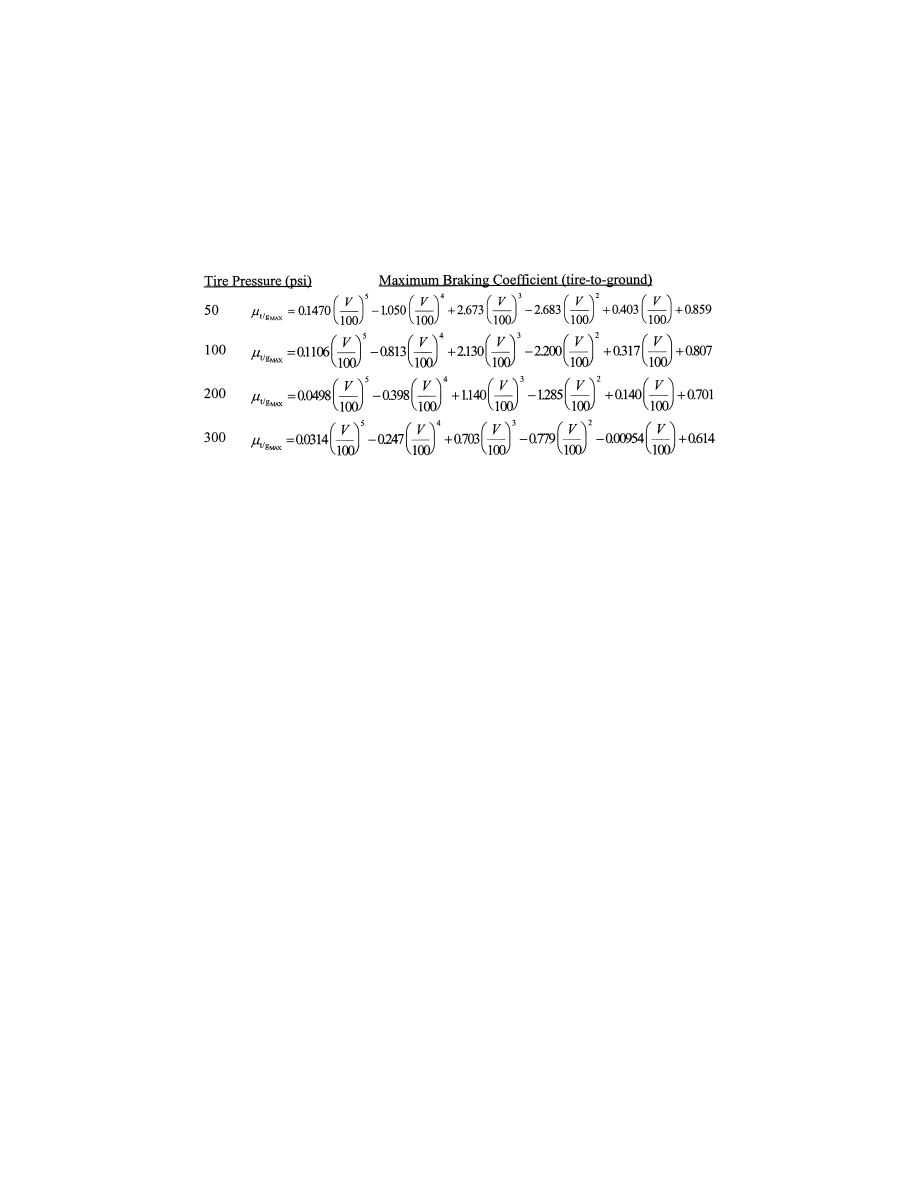
214
14 CFR Ch. I (1–1–19 Edition)
§ 25.111
Where—
Tire Pressure = maximum airplane operating
tire pressure (psi);
µ
t/gMAX
= maximum tire-to-ground braking
coefficient;
V = airplane true ground speed (knots); and
Linear interpolation may be used for tire
pressures other than those listed.
(e) Except as provided in paragraph
(f)(1) of this section, means other than
wheel brakes may be used to determine
the accelerate-stop distance if that
means—
(1) Is safe and reliable;
(2) Is used so that consistent results
can be expected under normal oper-
ating conditions; and
(3) Is such that exceptional skill is
not required to control the airplane.
(f) The effects of available reverse
thrust—
(1) Shall not be included as an addi-
tional means of deceleration when de-
termining the accelerate-stop distance
on a dry runway; and
(2) May be included as an additional
means of deceleration using rec-
ommended reverse thrust procedures
when determining the accelerate-stop
distance on a wet runway, provided the
requirements of paragraph (e) of this
section are met.
(g) The landing gear must remain ex-
tended throughout the accelerate-stop
distance.
(h) If the accelerate-stop distance in-
cludes a stopway with surface charac-
teristics substantially different from
those of the runway, the takeoff data
must include operational correction
factors for the accelerate-stop dis-
tance. The correction factors must ac-
count for the particular surface charac-
teristics of the stopway and the vari-
ations in these characteristics with
seasonal weather conditions (such as
temperature, rain, snow, and ice) with-
in the established operational limits.
(i) A flight test demonstration of the
maximum brake kinetic energy accel-
erate-stop distance must be conducted
with not more than 10 percent of the
allowable brake wear range remaining
on each of the airplane wheel brakes.
[Doc. No. 5066, 29 FR 18291, Dec. 24, 1964, as
amended by Amdt. 25–42, 43 FR 2321, Jan. 16,
1978; Amdt. 25–92, 63 FR 8318, Feb. 18, 1998]
§ 25.111
Takeoff path.
(a) The takeoff path extends from a
standing start to a point in the takeoff
at which the airplane is 1,500 feet above
the takeoff surface, or at which the
transition from the takeoff to the en
route configuration is completed and
V
FTO
is reached, whichever point is
higher. In addition—
(1) The takeoff path must be based on
the procedures prescribed in § 25.101(f);
(2) The airplane must be accelerated
on the ground to
V
EF,
at which point
the critical engine must be made inop-
erative and remain inoperative for the
rest of the takeoff; and
(3) After reaching
V
EF,
the airplane
must be accelerated to
V
2
.
(b) During the acceleration to speed
V
2
, the nose gear may be raised off the
ground at a speed not less than
V
R
.
However, landing gear retraction may
not be begun until the airplane is air-
borne.
(c) During the takeoff path deter-
mination in accordance with para-
graphs (a) and (b) of this section—
VerDate Sep<11>2014
12:50 Apr 30, 2019
Jkt 247046
PO 00000
Frm 00224
Fmt 8010
Sfmt 8010
Y:\SGML\247046.XXX
247046
ER18FE98.005</GPH>
spaschal on DSK3GDR082PROD with CFR